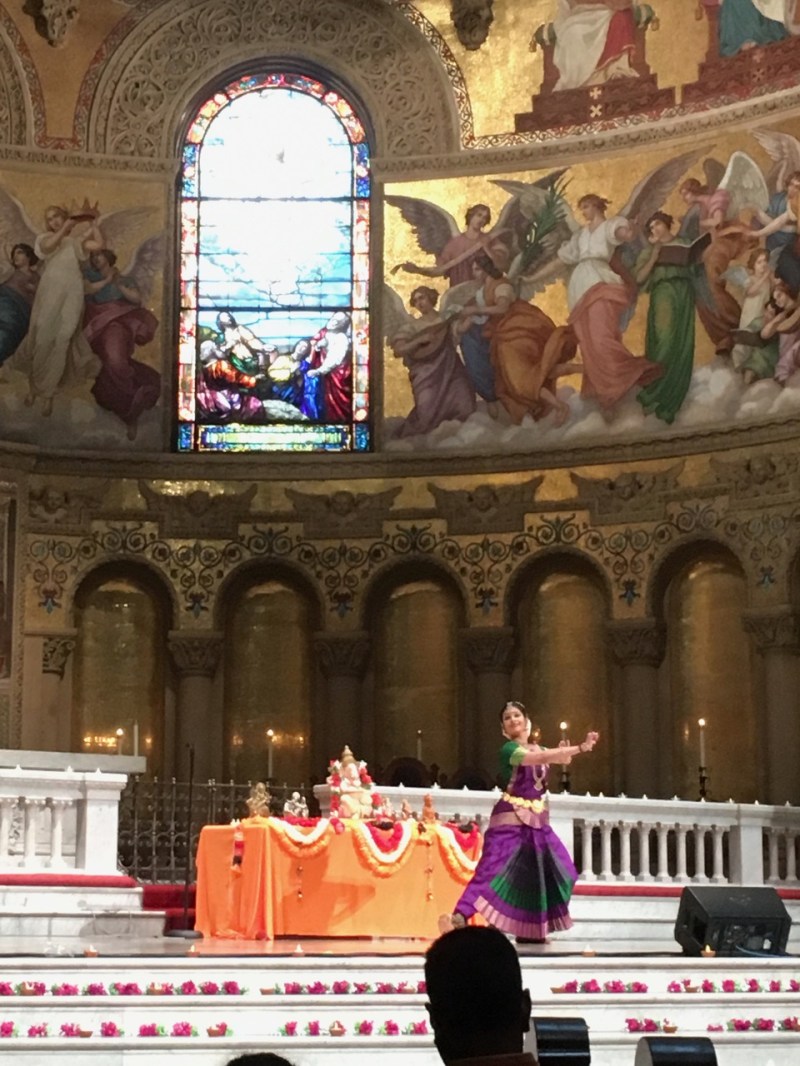Stepping into Memorial Church, I admired the way the stained glass windows illuminated the Ganesh statue on the orange table. I had arrived at the Diwali festival held on Nov. 3 by The Office of Religious Life. The festival was an evening filled with food, festivities and religious ceremonies. While Diwali is primarily celebrated in South Asia, the whole evening was a vibrant, universal celebration of the diverse faiths on campus.
As a newcomer to the Diwali tradition, I was surprised by the universality of the themes: The prayer chanted at the festival included the lines, “Asato ma satgamaya. Tamaso ma jyothir gamaya. Mrithyor ma amurutham gamaya. Om Shanthi Shanthi Shanthihi.” Translated, it means, “From ignorance, lead me to truth; From darkness, lead me to light; From death, lead me to immortality. Om peace, peace, peace.” While Diwali is celebrated by a variety of religious groups, including Hindus, Jains, Sikhs and Newar Buddhists, the theme of light remains constant.
To celebrate the prevailing of light over darkness, the evening included deepa jyothi, lighting of the lamp, accompanied by a chant. The flame of the light pointing upwards symbolizes knowledge that transcends limits. Then, student group Spicmacay performed classical Carnatic music and student Varsha Sankar danced bharatanatyam. She moved in a poised yet fluid manner, with the clanking of musical anklets accenting the rhythmic music. Both performances uplifted spirits.
In between the skits and dances, speakers from various religious backgrounds shared their experience, emphasizing tolerance and diversity. Sughra Ahmed, Associate Dean for Religious Life, mentioned the need to celebrate interfaith unity and to stand against faith-based violence, saying “Religious diversity is much more than celebrating… It is about engaging in the tension and navigating human realities.” Following Ahmed was graduate student Linta Reji, who commemorated the growth of Stanford Diwali through the years. She fondly recalled the memories of going to Old Union six years ago, taking pictures in her traditional dress with friends. Diwali offered a sense of home for her in the midst of a hectic first quarter. She expressed that the change in location from Old Union to Memorial Church “sent the important message of togetherness and inclusivity” and reflected that the true spirit of Diwali “is about erasing abstract boundaries that divide us on the basis of faith and nationality.”
Concluding the round of speakers, Sikh Student Association (SSA) representative JJ Singh Kapur ’22 shared a childhood experience. He recalled that he did not know how to respond to his elementary school classmate, who asked why he celebrated Diwali as a Sikh. Going home to his grandfather, he learned about the Sikh holiday Bandi Chor Divas, the liberation of prisoners day, which commemorates the release of the persecuted sixth Sikh Guru and 52 Hindu princes from prison. This story “has become a powerful symbol to the Sikhs — the release of the imprisoned and their triumphant homecoming is more than a physical liberation. It is remembered as a spiritual victory and an affirmation of communal unity of the Hindus and Sikhs at the time.”
Nagar sankirtan, a procession that includes singing a devotional song as onlookers join in, concluded the ceremony. The procession walked from the church to White Plaza. There, several performers, including Raagapella and Bhangra, showcased their dances and songs. Bhangra mixed traditional Punjabi beats with modern pop songs, enriching its performance with the synthesis of the new and old. Likewise, the festival as a whole featured a constant reshaping of the Diwali tradition.
“What makes Stanford’s celebration of Diwali unique is that it catches the attention of so many people on campus. For instance, our first-year Hindi class, taught by Professor Sonia Taneja, made rangoli (colorful decorations to bring in good luck) and even organized a Bollywood Flash Mob in the Main Quad. It was so much fun seeing onlookers bobbing their heads to Zingaat from the movie ‘Dhadak’ as well as taking photos of the Rangoli designs. It made me realize that the message of preserving the light of joy in our world is universal and resonates with all kinds of people despite their religion or creed,” Kapur said.
Contact Lindsay Chong at hlindsay ‘at’ stanford.edu.
